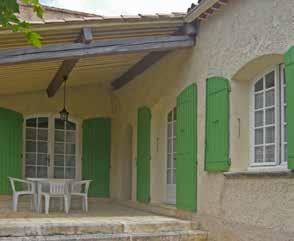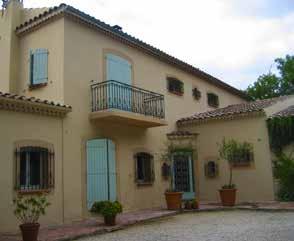DIATHONITE EVOLUTION
Cork-based, eco-compatible plaster for thermal insulation and home energy retrofit
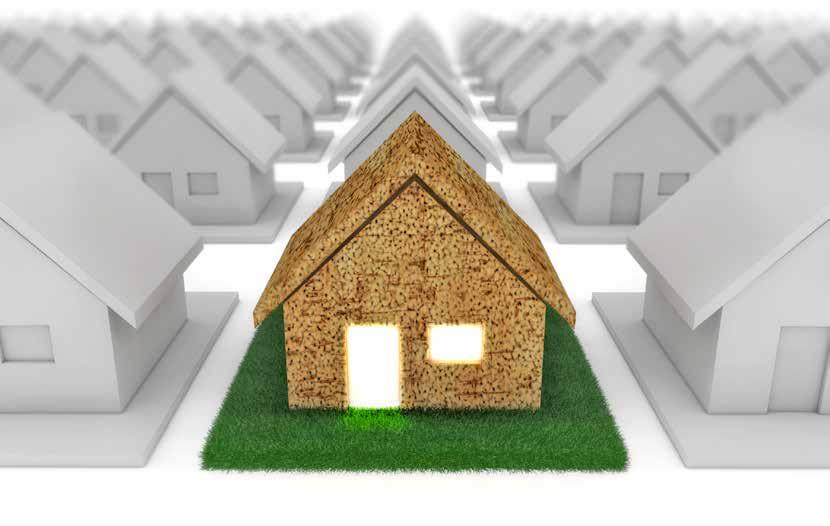


Cork-based, eco-compatible plaster for thermal insulation and home energy retrofit


Diasen undertook the first series of tests on cork based plaster as early as 1985. The aim of our research was to obtain a unique product that would have the best thermal, dehumidifying, sound absorbent and long lasting qualities (when exposed to cold/ heat and salt) with easy application.
All the materials used to produce Diathonite have a life-span of centuries; archaeological findings have even brought to light remains of Roman houses dating back to as far as 2000 years ago, which were insulated with cork.
The diatomaceous earth and clay, which form the basis of our product, have been accumulated in deposits for thousands of years on our planet.

Cork: cork was chosen because of its ability to be a complete material, effective for new construction trends. It is non-toxic, biologically pure, stable, waterproof, breathable, resistant, with good insulating capacity, electrically neutral, non-deformable, it has good mechanical strength, a low rate of combustion and excellent acoustic performances.
Clay: it is a natural porous and light material. It has good thermal inertia and compression resistance, is highly breathable and moisture-resistant.
Natural Hydraulic Lime NHL 3.5: is a natural hydraulic binder with high breathability; it is an excellent thermal insulator and highly resistant to thermal shocks, with excellent adhesion to substrates.
Diatomaceous earth: this is a naturally occurring mineral, formed through the accumulation of organic material (cuttlefish bones, vegetables etc.) in the ocean floor during pre-historic times. These deposits were left when the oceans receded and are found in various places around the world. Thanks to its high level of porosity (85% of the volume of diatomaceous earth) it can absorb liquids up to one and a half times its weight.
Eco-friendly additives: obtained from plants, they amalgamate the mixture, making it more workable and easier to apply. They give rise to the formation of micro cells, which maintain a high level of permeability to water vapour and increase the thermal resistance of the binder.
Fibers: fibers are easily dispersed in the matrix, creating a homogeneous material that counteracts shrinkage and the formation of micro-cracks, consequently increasing its resistance. They give mechanical resistance, a perfect stability over time and they do not release toxic residues.








Cork is a natural and eco-friendly resource that fully interprets modern green building. It is highly elastic and has excellent physical, chemical and mechanical properties: it is waterproof, given its compact structure, it has an excellent thermal and acoustic insulating properties, it is resistant to severe weather conditions, fire, insects, and rodents Cork is extracted from cork-oak trees (Quercus Suber), removing the bark from the trunk and larger branches without damaging the plant, with extraction cycles of approximately 9-12 years. This way, the plant is able to grow new bark, making cork a completely renewable resource.

Thanks to its extraordinary properties, cork is widely used in green building since it fully respects construction process sustainability principles:
√ It is a renewable raw material and its harvest does not damage the environment
√ It is clean and safe to process, and does not require an excessive use of energy
√ Its use ensures healthy living in all circumstances
√ It contributes to energy saving
√ It is not dangerous to human health and environment


Today, like in the past, cork is obtained without damaging the plant
After harvesting the cork, is ready to be cleaned and processed


Cork is used in various sectors, from food industry to textile industry, and can be recycled and reused
Diasen recycles cork from other production cycles, grinding it in order to obtain the required granulometry.
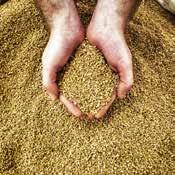
DIATHONITE Evolution DTA 7/12 - 1509
Enduit de façade Enduit de rénovation de façade










LEED® - Leadership in Energy and Environmental Design
Diathonite Evolution is an eco-friendly product, because it is formulated with non dangerous material for the environment and safe for human health, both during application and after its complete curing. For this reason, it contributes to obtain LEED credits according to Green Building Council certification protocols.









Excellent insulation against cold and heat. Keeps walls warm in winter and cool in summer.
High compression resistance. It can be used both indoor and outdoor, and gives walls strength and resistance.
Diathonite leaves walls free to breathe, balances room humidity, prevents mould and condensation from developing, and contributes to healthy living.
Diathonite is 3 times lighter than traditional plasters. It does not weigh down the structure, limits CO2 emissions during transport and waste production.



Ten times more elastic than traditional plasters; reduces the risk of cracks.
Diathonite does not burn and does not emit smoke. Euroclass A1 fire resistant.

Thanks to cork and its porous structure, Diathonite contributes to sound absorption and acoustic insulation.
Diathonite is a completely natural product, and its use contributes to LEED credits.
The diatomaceous earth contribute to the hygrometric balance of rooms, giving maximum living comfort.







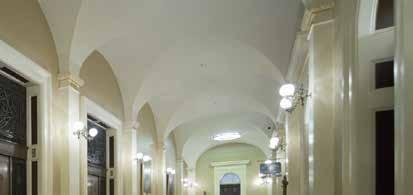
Applying a coating of the insulation system enables you to maximise thermal inertia of the walls, limit thermal dispersion, rectify thermal bridges, and protect the façade from water absorption.
The use of Diathonite Evolution indoor enables to control humidity, obtain mechanical strength, correct room noise, rapidly achieve thermal comfort, and save on the cubic volume of rooms.
Diathonite Evolution can be applied to ceilings of any shape and geometry, thus enabling to maintain the architectural characteristics of the structure being renovated.
Its capacity to eliminate rising damp makes Diathonite Evolution the best solution for applications in correspondence with skirting, even when it is used alongside a panel insulation system.
In underground places such as basements, cellars, and garages, using Diathonite Evolution guarantees a perfect hygrometric balance in rooms and it prevents the formation of condensation and mould.
Thermal bridges are one of the main causes of thermal dispersion in buildings. Diathonite Evolution rectifies thermal bridges simply and effectively.





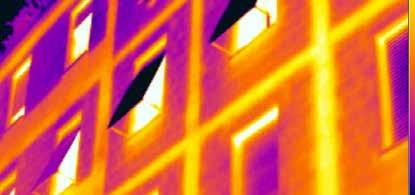












Thermal insulation is an essential aspect to guarantee energy saving and high living comfort of buildings. In this system the insulation material is applied to the whole outer surface of the building, just like a protective coating on the entire structure.
Diathonite Evolution, a cork-based thermal plaster, enables you to easily and naturally create naturally high-performance thermal insulation.



1 2
3
4 5
6
Brick/block walls
Concrete pillar
AQUABOND
Universal primer for plaster
DIATHONITE EVOLUTION
Thermal plaster
ARGACEM
Skim coat
DIASEN COLOURED FINISHING
(see page 27)

Benefits
Thermal insulation "365 days" a year
Insulation from heat and from cold are two different things. Diathonite guarantees maximum insulation both in summer and winter.
Breathable insulation
High breathability enables the walls to breathe, thus making your internal rooms healthy and hygrometrically comfortable.
Elastic and tough
Unlike dry systems, the mechanical strength and elasticity of Diathonite prevents cracking.
For external as well as internal use
It can also be applied indoors, solidifying the walls as only plastered walls can.
Protection from fire
Diathonite Evolution is classified Euroclass A1: it does not burn and does not emit smoke.
Fast application
Diathonite is applied in the same way as traditional plaster, does not require specialized workmanship, and simplifies construction activities.
Suitable for any type of structure
Diathonite is versatile and can be applied to different types of substrates and structures.
Eco-compatible solution
Diathonite is an eco-compatible product that contains natural raw materials.
Hygrometric balance
It acts as a hygrometric lung: it regulates humidity and prevents condensation from developing, keeping rooms comfortable in every season.
Humidity control
It removes humidity from the walls. Its insulating capacity remains constant and it prevents rising damp problems.



Energy rehabilitation and humidity restoration
The renovation of older structures often presents this kind of issues: solid walls without thermal insulation, irregular walls and made of different materials, widespread rising damp. Insulating in such situations requires a proper evaluation of the system that is best suited for the structure's characteristics.
Diathonite Evolution meets all renovation requirements thanks to its ability to combine its insulation capacity with its dehumidifying action.
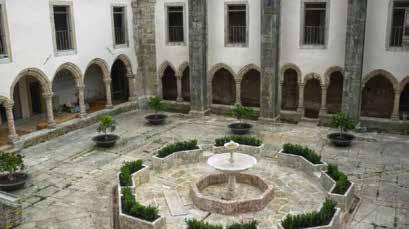

1
2
3
4
Old wall: Masonry/brick/stone/earth or adobe
DIATHONITE EVOLUTION
Thermal plaster
ARGACEM
Skim coat
DIASEN COLOURED FINISHING (see page 27) 1 2 3 4


Diathonite Evolution couples its thermal insulating function with a dehumidifying action, thus enabling total restoration of the structure.
It functions as a hygrometric lung: it regulates humidity and prevents condensation from developing, keeping rooms comfortable in every season.
Diathonite Evolution is perfectly compatible with existing plasters: it can be applied to bricks, stone and mixed wall substrates.
Diathonite enables you to work directly on uneven masonry: restores smoothness of the walls by creating a continuous, uniform layer.
The continuity of the insulating layer, together with the elastic feature that distinguishes Diathonite, contributes to preventing cracks from forming.
Diathonite thickness can be divided between the outside and inside: its high mechanical strength makes the walls strong and solid.
Compared to dry insulating systems, applying Diathonite in renovation works is easier, thus significantly decreasing application costs.
Diathonite is a natural hydraulic lime based (3.5 NHL) plaster and, for this reason, is compatible with historic restoration works.
Diathonite is a product that contains natural raw materials, and is thus in line with green building criteria.
Besides contributing to energy requalification of walls, Diathonite protects against rainwater absorption.



When it is impossible to intervene externally, the only way to apply the insulation is on the internal side of the walls. Internal insulation requires resistant materials, that do not excessively reduce the cubic volume of the rooms and have good hygroscopic features to prevent humidity problems.
Thanks to its mechanical strength, breathability, and hygroscopic capacity, Diathonite Evolution is the best solution for internal applications, for both renovations and new buildings.



1
2
3
4
Old wall: Masonry/brick/stone
DIATHONITE EVOLUTION
Thermal plaster
ARGACEM Skim coat
DIASEN COLOURED FINISHING (see page 27)

Benefits
Hygrometric balance
Diathonite contributes to balancing room humidity, thus guaranteeing maximum living comfort in every season.
Ceiling applications
Diathonite can also be used on ceilings and soffits, even with shaped structural forms such as vaults and domes.
Option for partial interventions
Like in the case of blocks of flats, internal thermal insulation enables you to insulate individual flats.
Compressive strength
The compressive strength of Diathonite is comparable with a traditional plaster hence appliances or tiles can be fixed on the insulated walls.
Saving on floor area
Diathonite does not require any dry linings or special coatings, therefore, the rooms are not reduced in size.
Compatible with any kind of furnishing
An internal wall plastered with Diathonite allows any type of furnishing such as shelves, pictures, spotlights, etc. to be fixed to it.
Walls are free to breathe
The high breathability that distinguishes Diathonite enables walls to breathe, it eliminates the need of vapour barriers as it is not affected by interstitial condensation, and prevents mould and condensation from developing.
Suitable for any type of structure
Diathonite adapts itself perfectly to surface applications of any shape and geometry, thus maintaining the original room features.
Contributes to acoustic comfort
Diathonite is also distinguished by its acoustic insulation and sound-absorbing capacity and thus contributes to acoustic comfort in rooms.
An internal room insulated with Diathonite rapidly reaches thermal comfort: it is an ideal solution for rooms that are sporadically used.



The external façade of a building is surely the part that most affects the general appearance of the structure. However, besides the aesthetic aspect, proper restoration must also keep the functional properties in mind.
Diathonite Evolution is ideal for applications on to old plaster, thus providing the structure with aesthetic and functional restoration. Thanks to the spray application, Diathonite Evolution adapts to the characteristic geometry of the façade.


1 3 4 2

1
2
3
4
Previously plastered wall
DIATHONITE EVOLUTION
Thermal plaster
ARGACEM
Skim coat
DIASEN COLOURED FINISHING (see page 27)

Benefits
Strong and elastic
Diathonite is solid and resistant; its elasticity prevents cracking.
Adaptable to any structure
Diathonite easily adapts to any shape and structure, keeping the original characteristics of each surface.
Aesthetic and functional restoration
Diathonite has mechanical strength than can be compared to traditional plaster: it makes the walls solid and resistant.
Application on to any type of external plaster/render
Diathonite can be applied on to any type of old plaster, in combination with Aquabond universal primer for plasters.
Humidity restoration
Unlike traditional dry systems, Diathonite is able to eliminate any rising damp, preventing all problems linked to damp walls.
Quick and cost effective application
Diathonite is applied in the same way as traditional plasters, eliminates the expense of the removal of the old plaster, does not require specialised installers, and limits the probability of errors.




Diathonite Evolution combined with FiberCork cork panels
Some cases require particularly highperformance thermal values, which are hard to achieve by only using thermal plaster. To meet the requirements of harsher climatic areas, you must consider using insulating panels that can reach greater thickness.
The combined use of FiberCork panel and Diathonite Evolution thermal plaster creates a system that unites panel performance with Diathonite Evolution resistance.



1 2 3 4 5 6 7 8
Existing wall: masonry / brick / stone / concrete
DIABOND
Glue for cork panels
FIBERCORK
Brown cork insulation panel
DIATHONITE EVOLUTION
Thermal plaster
POLITES 140
Fibreglass plaster retaining mesh
DIATHONITE EVOLUTION
Thermal plaster
ARGACEM
Skim coat
DIASEN COLOURED FINISHING (see page 27)

Heat insulation and energy saving
It is possible to easily reach the best thermal values thanks to the combined use with FiberCork panels.
High acoustic insulation
The system contributes to reaching optimal levels of acoustic insulation.
Mechanical strength
Diathonite Evolution provides the insulating system with the solidity and resistance that only plaster can guarantee.
Eco-compatibility
FiberCork and Diathonite Evolution are both natural and ecocompatible products.
For walls and ceilings
The system can be applied to both walls and ceilings.
Suitable for indoors and outdoors
Depending on the finishing layers, the system can be applied both internally and externally.




Wooden buildings are becoming increasingly popular in modern residential building. Low environmental impact, quick installation and good energy and seismic performance make prefabricated wooden houses a viable alternative to conventional building systems.
Diathonite Evolution can also be applied to wooden walls. Breathability, thermal insulation capacity, and fire resistance make cork plaster the ideal solution for prefabricated wooden houses.



1
2
3
4
5
6
7
Wooden substrate
AQUABOND
Universal primer for plasters
DIATHONITE EVOLUTION
Thermal plaster
POLITES 140
Fibreglass plaster retaining mesh
DIATHONITE EVOLUTION
Thermal plaster
ARGACEM
Skim coat
DIASEN
(see page 27)
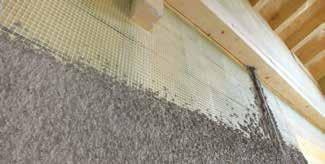
High thermal insulation in winter and summer thanks to the high thermal capacity of Diathonite Evolution.
Diathonite Evolution does not crack thanks to its elasticity, which is 10 times higher than conventional plasters.
Protection from fire
Diathonite Evolution increases the fire resistance of the entire structure. Classified Euroclass A1.
The system can be applied on to walls and ceilings.
Suitable for indoors and outdoors
Depending on the finishing layers, the system can be applied both internally and externally.
Diathonite Evolution contributes to reaching perfect internal living comfort thanks to the breathability and hygroscopic capacity.

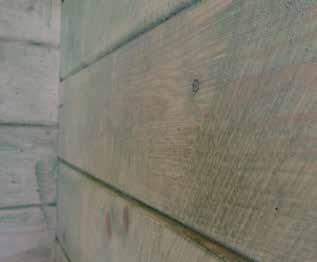


Effective insulation does not only mean preventing outward heat dispersion during the winter, but also preventing overheating rooms in the summer months. Contrary to what we are led to believe, insulating materials do not act the same in summer and winter.
Thermal insulation at stationary regime (Winter)

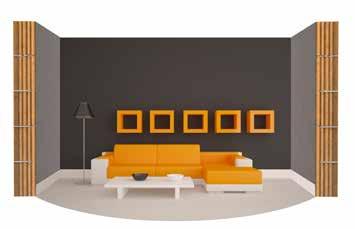
In winter, thermal flow is one way, usually moving from indoors (warmer ambient) to outdoors (colder ambient). This is because the indoor temperature will be constantly higher than outdoors, therefore, thermal flow will be constant throughout the day.

Thermal insulation at dynamic regime (Summer)
In summer, there is a two-way thermal flow since indoor and outdoor temperatures are not constant throughout the day. Moreover, we need to consider the effects of solar radiation heating the wall, which which consequently radiates this heat inwards.
Thermal diffusivity: summer behaviour of insulating materials
The parameter that enables us to evaluate the actual thermal insulation capacity from heat of an insulating material is thermal diffusivity. Thermal diffusivity is the ratio between insulating capacity λ (thermal conductivity) and thermal capacity (factor of specific heat p and specific weight c).

The insulating capacity (thermal conductivity) lessens the intensity of the incoming thermal wave. Optimal thermal capacity allows heat to accumulate, delaying inward transfer to only the coolest hours of the day.


The insulating capacity (thermal conductivity) lessens more the intensity of the incoming thermal wave. However the limited heat capacity, which is mainly due to a low specific density, is unable to accumulate heat, thus allowing it to radiate into the rooms.
Thermal bridges are portions of masonry where different materials with different insulating capacities are used, creating "thermal discontinuity" that favour thermal dispersion. Concrete pillars and beams are a classic example of thermal bridge. Thermal bridges are one of the biggest causes of heat dispersion in buildings, and failure to correct them can also give rise to condensation phenomena and the development of mould.



√ No heat dispersion
Rectifying thermal bridges prevents outward heat dispersion, thus increasing energy saving.
√ No condensation and mould
A corrected thermal bridge will not give rise to the formation of condensation and, consequently, mould on the internal surface of the wall.
√ Increased thermal comfort
The uniform surface temperature of the wall, through irradiation, increases well-being and living comfort.
√ Easy levelling of the walls
Insulating a thermal bridge with Diathonite Evolution enables you to keep the surface of the wall flat.
From the design phase, in order to insulate a thermal bridge, the gap between the concrete pillar and the masonry block can be insulated with the same material as for the rest of the wall, thus creating a monolithic structure.


the renovation of older structures often faces the issue of damp walls. This problem must be considered and dealt with the appropriate solutions, not to compromise the performance of the insulation system, nor the aesthetic value of the walls.
Using Diathonite Evolution in renovations creates an energy requalification system and humidity restoration, thanks to its special ability to combine insulating qualities with restoring functions.





√ Wet insulation, bad insulation
Diathonite Evolution eliminates any humidity it comes into contact with. Unlike synthetic insulations, its insulating capacity remains constant over time.
√ A dry wall is a warmer wall
Diathonite Evolution keeps the wall dry and thus prevents heat dispersion caused by the presence of humidity within the wall.
√ Two interventions in a single application
Diathonite Evolution enables you to obtain thermal insulation and humidity restoration in a single application.


√ No condensation and mould
Thanks to its thermal and hygroscopic properties, Diathonite it contributes to prevent the risk of superficial condensation or interstitial condensation, therefore mould from developing.
√ Healthy and comfortable rooms
Given its breathable properties, Diathonite keeps internal rooms healthy and comfortable since it enables the natural transmigration of vapour.
√ 360° Restoration system
A building renovated with Diathonite Evolution will have greater energy savings, a better aesthetic façade and, thus, a higher commercial value.
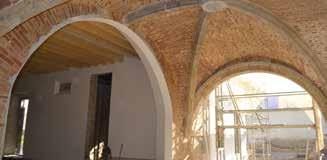
The presence of people and their daily routines (breathing, physical activity, kitchen and bathroom steam) increase the relative humidity in rooms. Poor ventilation and the use of modern windows limit the natural elimination of humidity. This is why it is important for the walls to contribute in controlling and eliminating internal humidity.
It is important to evaluate how internal wall insulation affect the hygrometric balance , the indoor comfort and air quality.

Material hygroscopicity:
Hygroscopy means the capacity of a material to rapidly absorb the water molecules from the surrounding environment whitout undergo physical change. Using hygroscopic materials for indoor insulation buffers the level of indoor relative humidity. Moisture is absorbed by the insulating layer can evaporate with the right conditions. The porosity of the material helps this process and the breathability.
= 4
The remarkable breathability of Diathonite does not obstruct the natural flow of vapour

This characteristic is linked to the porous structure of the material, distinguished by the presence of micro and macro hollow spaces joined together.
Its hygroscopic capacity enables Diathonite to absorb and rapidly dissipate humidity
Its hygroscopic capacity enables rapid absorption of humidity, thus preventing it from lingering in the environment or transforming into condensation 0.40

The combined effect of breathability and hygroscopicity enables Diathonite Evolution to actively contribute to controlling humidity and maintaining rooms comfortable, thus making it the ideal solution for any type of internal thermal insulation operation
Detail of the hygroscopic capacity of Diathonite, which can absorb and dissipate the humidity it comes into contact with, preventing it from lingering in the environment and giving rise to condensation and mould.



Substrates

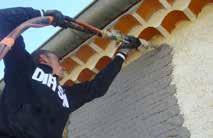

A 1 B C D E F
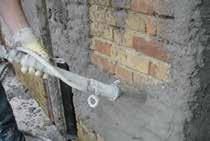

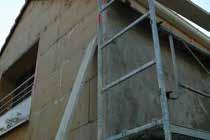




Direct application
New bricks
Existing bricks
Existing plaster
Stones
Cork Panels
Natural fibre panels
Use of AQUABOND
Universal primer for plasters
Concrete
Plasterboard Wood
Synthetic panels
Diathonite Evolution is a fibre-reinforced plaster and, in most cases, does not require a plaster retaining mesh. However, the use of a fibreglass mesh is recommended for some applications:
√ Applications on to ceilings
√ Applications on wooden prefabricated structures
√ Applications on to panels, whether synthetic or natural
Skim coats

√ For thickness greater than 6 cm
√ Joints between two different masonry elements (pillar/cladding)
Diathonite Evolution is skimmed by using highly breathable Argacem skim coats, which are available in different granulometry according to the desired finish.
ARGACEM HP
Granulometry: 0-0.9 mm
ARGACEM ULTRAFINE
Granulometry: 0-0.1 mm
ARGACEM MP
Granulometry: 0-0.5 mm
All Argacem skim coats are totally compatible with Diathonite Evolution and can be applied both externally and internally.

For external applications, Diathonite Evolution must be finished by using water-repellent and breathable materials:
Diathonite Cork Render Granulometry: 0-1 mm
Plasterpaint Coloured Granulometry:
0.06-0.1mm o 0.06-0.6mm
Argacem Coloured Granulometry: 0-1 mm
Acrilid Protect Coating Smooth Finish
For internal applications, Diathonite Evolution is finished using paints that maintain the breathable qualities of the plaster:
C.W.C. Stop Condense Anti-mould Paint Smooth Finish
Limepaint
Water-based lime paint Smooth Finish
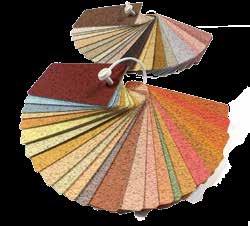
Application
Hand Application
Diathonite Evolution is a pre-mixed product, and hand application does not differ from conventional pre-mixed plaster. After mixing the material with water in a cement mixer or by using a mixer drill, the product is applied with a trowel directly onto the substrate.
Equipment: Cement mixer and trowel



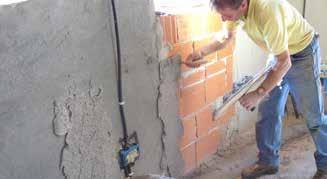
Spray application
Diathonite Evolution can also be applied by using a plastering pump for pre-mixed materials. Spray application can be used for large surfaces, much faster than manual application.
Equipment: Lung plastering pump


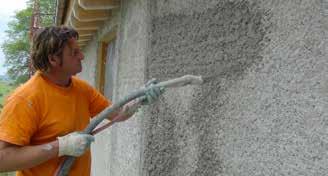
Simple and traditional application
Diathonite Evolution is applied in the same way as traditional plasters: application does not require specialised labour.
Cost effective application
Applying Diathonite Evolution is much more cost effective than dry insulating systems.
Less probability of errors
Since it is a conventional application, it is rather difficult for the installer to make errors.
Continuity of the insulating layer
Diathonite creates a continuous, uniform layer that protects the entire wall, without joints or critical areas that could develop cracks.
Perfect adhesion to the substrate
Diathonite adheres perfectly to the substrate without leaving any gaps that could encourage the formation of interstitial condensation over time.
Masonry smoothing
Diathonite penetrates well into mortar joints and irregularities of old masonry walls.
Option to divide the thickness
The overall thickness of the insulating layer can be divided between the internal and external walls, as per requirements.
Suitable for any type of structure
Diathonite Evolution adapts perfectly to any type or structure of walls.
Clean and safe application
Thanks to its recycled and recyclable paper bag, Diathonite Evolution minimises on-site waste production.


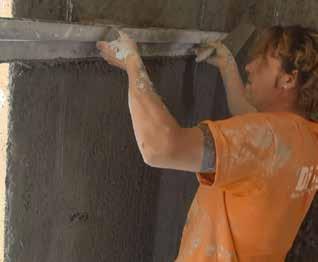









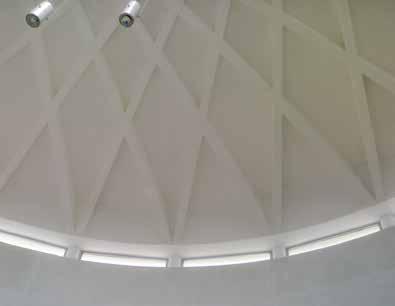



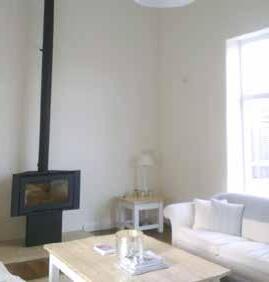
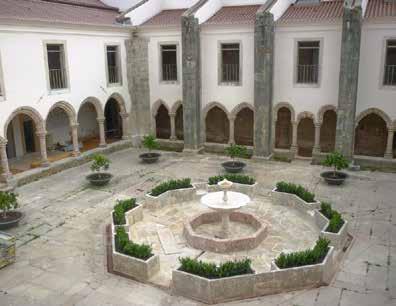





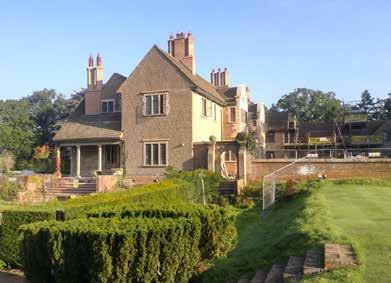

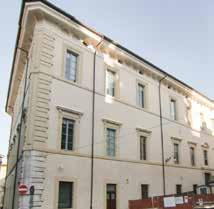





Photo Gallery
Wood frame structures and cork panels









